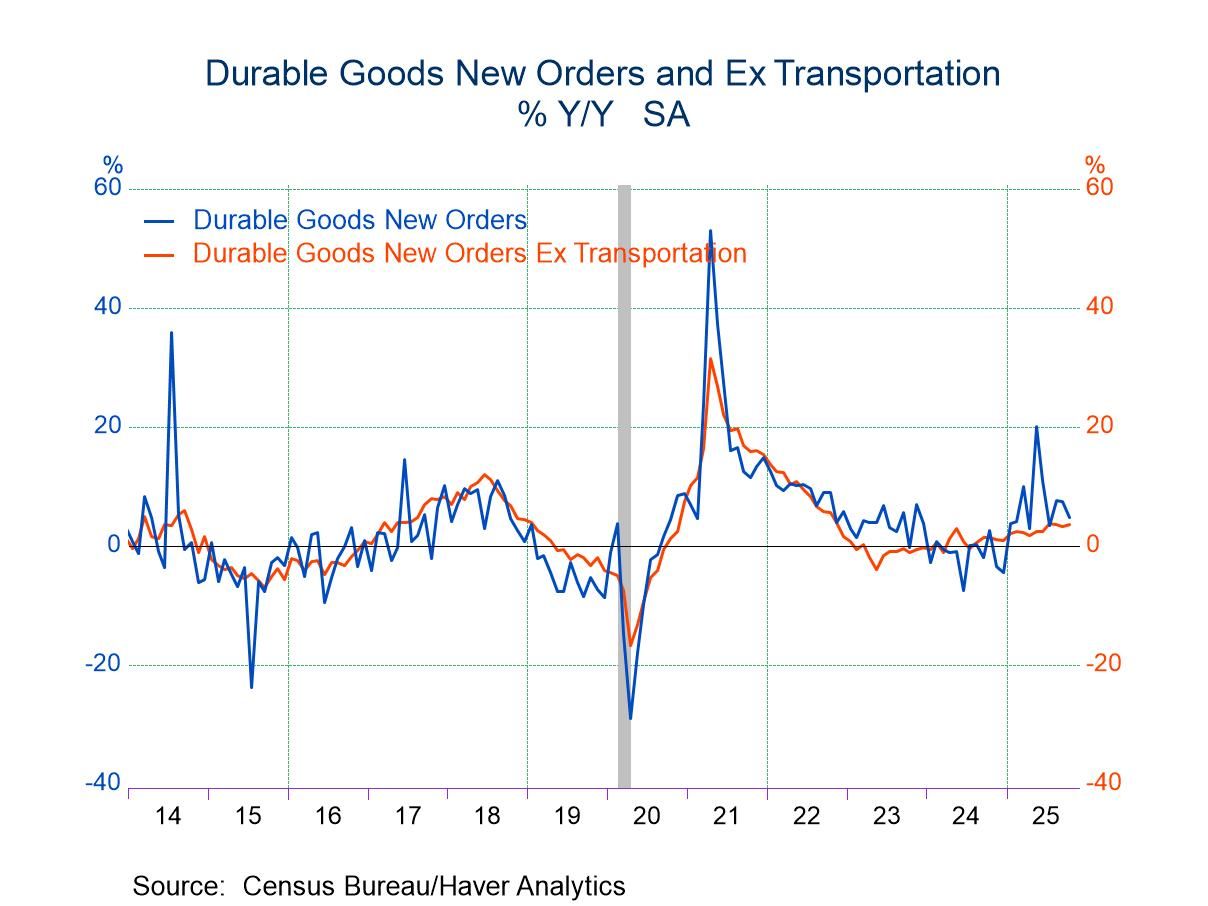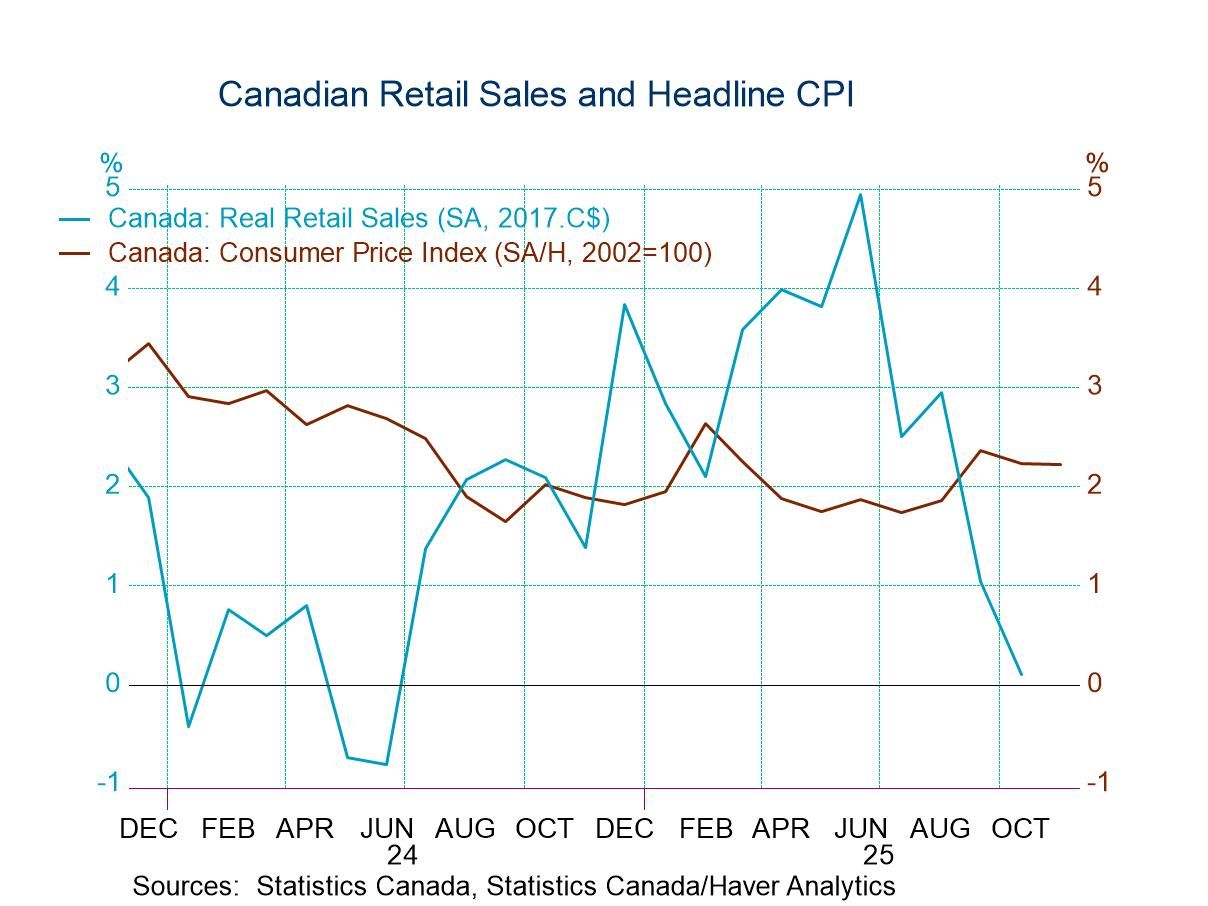U.S. Durable Goods Orders Fell in December
by:Sandy Batten
|in:Economy in Brief


Manufacturers' new orders for durable goods fell 0.9% m/m (+15.6% y/y) in December after an upwardly revised 3.2% m/m increase (initially 2.5%) in November. The Action Economics Forecast Survey was expecting a 0.5% m/m decline. For all of 2021, orders were up 20.9% after having fallen 13.6% in 2020.
The December decline was due mostly to a 3.9% m/m fall (+23.6% y/y) in transportation orders following an 8.2% m/m jump in November. A 13.5% m/m drop in aircraft orders was the major source of the decline in transportation orders in December. Aircraft orders had jumped up 30.6% m/m in November. Orders for motor vehicles and parts were up 1.4% m/m, their third consecutive monthly increase. Excluding transportation, the remainder of orders rose 0.4% m/m (+12.0% y/y) in December on top of a 1.1% increase in November. Across the other major sectors, orders for primary metals and fabricated metal products rose in December while orders for machinery, computers and electronic products and for electrical equipment fell.
Durable goods shipments rose 0.8% m/m (10.1% y/y) in December, their fourth consecutive monthly increase, after an upwardly revised 0.8% m/m rise in November (initially reported as 0.7% m/m). Transportation shipments were up 0.9% m/m in December while shipments of defense goods slumped 2.5% m/m. Shipments excluding transportation rose 0.8% m/m while shipments excluding defense were up 1.0% m/m in December. This report now contains an advance reading on shipments of nondurable goods. They slipped 0.1% m/m (+13.8% y/y) in December, their first monthly decline in 10 months, following a 0.5% m/m rise in November. Shipments in all manufacturing industries increased 0.3% m/m (+11.2% y/y) in December after an upwardly revised 0.7% m/m gain in November (initially 0.6% m/m).
Also in the report are key readings on capital goods shipments and orders. The shipments figures provide a dependable reading on the course of business spending on equipment in the national accounts. Core (that is, excluding defense and aircraft) capital goods shipments increased a solid 1.3% m/m (10.4% y/y) in December following an upwardly revised 0.4% monthly gain in November (initially 0.3% m/m). This provides a good starting point for business equipment spending for Q1 2022. Core capital goods orders were unchanged in December (+10.4% y/y) following a 0.3% monthly gain in December (revised up from 0.1% m/m).
Unfilled orders for durable goods rose 0.5% m/m (+7.4% y/y) in December after a 0.8% m/m gain in November. Unfilled orders are not calculated for nondurable goods. Manufacturing inventories increased 0.2% m/m (8.9% y/y) in December, reflecting a 0.7% m/m rise in durable goods inventories and a 0.5% m/m decline in nondurable goods inventories.
The durable goods and nondurable goods data are available in Haver's USECON database. The Action Economics consensus forecast figure is in the AS1REPNA database.


Sandy Batten
AuthorMore in Author Profile »Sandy Batten has more than 30 years of experience analyzing industrial economies and financial markets and a wide range of experience across the financial services sector, government, and academia. Before joining Haver Analytics, Sandy was a Vice President and Senior Economist at Citibank; Senior Credit Market Analyst at CDC Investment Management, Managing Director at Bear Stearns, and Executive Director at JPMorgan. In 2008, Sandy was named the most accurate US forecaster by the National Association for Business Economics. He is a member of the New York Forecasters Club, NABE, and the American Economic Association. Prior to his time in the financial services sector, Sandy was a Research Officer at the Federal Reserve Bank of St. Louis, Senior Staff Economist on the President’s Council of Economic Advisors, Deputy Assistant Secretary for Economic Policy at the US Treasury, and Economist at the International Monetary Fund. Sandy has taught economics at St. Louis University, Denison University, and Muskingun College. He has published numerous peer-reviewed articles in a wide range of academic publications. He has a B.A. in economics from the University of Richmond and a M.A. and Ph.D. in economics from The Ohio State University.






